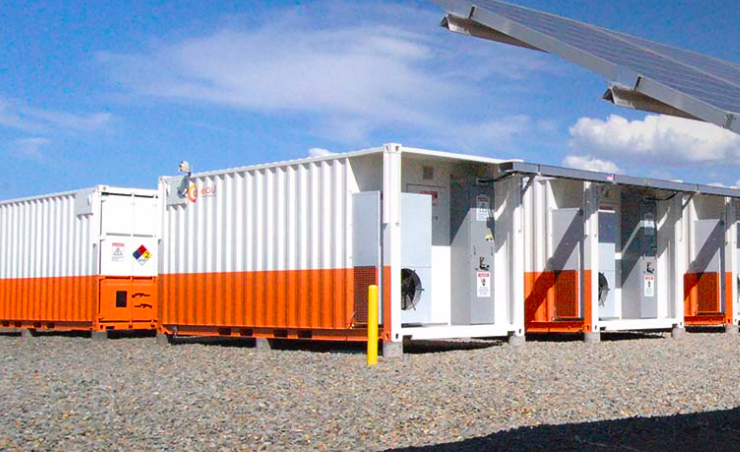pv magazine Australia: They are heavy, old-school technology and, naturally, full of lead. Is there really a future for lead acid?
Alistair Davidson: All forecasters agree that the market for battery energy storage is set to grow substantially in the coming ten years, driven by governments around the world setting goals and targets for decarbonisation and electrification. This growth in demand will be so large that it will require a range of battery technologies to meet that demand. Lithium-ion will obviously be a key player, but lead batteries are the only other battery technology that can meet the technical requirements for energy storage systems on a mass market scale. This provides a significant opportunity for the lead battery industry.
But how can lead acid technology compete?
There are pros and cons for all battery technologies, including lithium-ion. Lead batteries are 99% collected and recycled at end-of-life in Europe and North America, making them the most sustainable and recycled battery technology. They are also reliable and robust, with a 150-year history of being safe. The upfront cost of lead batteries is also cheaper compared to other battery technologies. For example, microgrids require reliable, safe and hardy battery technologies and lead technology is an ideal option.
Lead batteries are also continually developing and advancing. CBI has produced a new technical roadmap identifying priority areas of research for lead battery technology to ensure continued improvements in lifetime and performance.
You mention microgrids, how also do you see lead acid finding a place in the industry, particularly as it relates to solar PV?
Lead batteries have a lower price than Li-ion batteries and some types of flow batteries which makes them more attractive than competitor batteries. Of course, technical specifications are important and also battery life but lead batteries are available with a wide range of specifications suitable for different duty cycles and the industry has improved the product both for deep cycle and shallow cycle duty. Solar by its nature is variable both during the day and over the seasons so shallow cycling is often the normal pattern of use. This means that solar PV installations are an area where lead batteries are well adapted.
But beyond price and flexibility in terms cycling, there are other technologies that can meet longer duration potentially better than lead acid, like flow batteries. Do you see the various flow chemistries as potential technological competitors?
Lead batteries are more scalable than flow batteries which tend to be supplied in standard modules and are intrinsically safe. Li-ion batteries contain organic electrolytes and in a fire there is a risk of explosion which needs to be managed by careful design, fire detection and separation from other parts of the system. Lead batteries have aqueous electrolytes which are not flammable so in small installations lead batteries are easier to manage. In addition lead batteries are easily and economically recycled at end-of-life with a net credit to the user. Li-ion batteries are difficult to recycle and there is a cost for safe disposal. Flow batteries such as zinc-bromine need careful disposal at end-of-life.
The invention of the UltraBattery/Ultraflex by Australia’s CSIRO, and its commercialisation by Ecoult, seems promising. What does the future hold for ‘advanced lead-carbon’ hybrid batteries, and do they have the potential to outstrip the classic lead-acid battery?
Advanced lead carbon batteries will become the standard offer for energy storage as they offer longer cycle life and better performance but this isn’t a development that is standing still. There will continue to be improvements in the years to come.
CBI recently produced an interactive project map. There were 13 nodes on the CBI map in Australia, making it the third best represented country, bettered only by China and the United States. Why do you think that is?
More opportunities for solar PV and off-grid locations served by gensets that can be more economical and environmentally friendly with renewable power sources backed up by batteries. However, it is important to note that CBI’s interactive map contains a range of examples showing lead batteries in different applications for utility and renewable energy storage. It isn’t designed to be an exact representation of the scale of lead battery usage in a country or a continent. We’ll be adding many more.
Interview by Blake Matich
This content is protected by copyright and may not be reused. If you want to cooperate with us and would like to reuse some of our content, please contact: editors@pv-magazine.com.








By submitting this form you agree to pv magazine using your data for the purposes of publishing your comment.
Your personal data will only be disclosed or otherwise transmitted to third parties for the purposes of spam filtering or if this is necessary for technical maintenance of the website. Any other transfer to third parties will not take place unless this is justified on the basis of applicable data protection regulations or if pv magazine is legally obliged to do so.
You may revoke this consent at any time with effect for the future, in which case your personal data will be deleted immediately. Otherwise, your data will be deleted if pv magazine has processed your request or the purpose of data storage is fulfilled.
Further information on data privacy can be found in our Data Protection Policy.